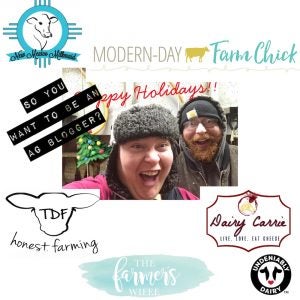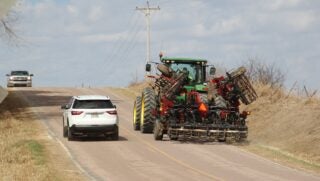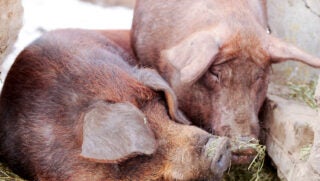When working with farmers on how to connect with consumers using digital tools, some want to take it to the next level and start blogging (which I highly encourage). Here are the steps I take to get them started.
Ask yourself these eight questions …
1. What am I going to blog about?
If I were a dairy farmer, I would blog about basic dairy (or depending on your ag specialty, you could do beef, egg, sheep, crop, etc. …) farming. While you might not think it’s exciting, most consumers know very little about farm life and how modern farming works. Stick to how you farm and take care of the animals and make it as easy to understand as possible. There are lots of different topics within farming, but I would treat my first posts as if you were giving a farm tour. Also, try to use your blog post headlines in the form of questions. “How are calves raised on a dairy farm?” Then, write about it or record a video response. Video is very popular and is the most shared communications vehicle. If you are comfortable on camera, consider this option. You can see how Tillamook Dairy Farmer and Spruce Row Farm use video to reach consumers.
2. What will my domain name be?
Select a domain name that matches the farm, or if it is for yourself, use your name or a fun handle that you would like to be known for. For instance, Dairy Carrie has had great success with her brand name. It rhymes and is easy to say and spell. But, I’ve known others who have struggled with their brand name because they picked something they no longer are fond of. Find something that works for you and you can be proud of. If you can add “dairy” or “farm” or “cows,” it helps consumers and Google associate what you do with the name.

3. How much will this cost me?
Domain names are affordable at about $7 to $20 a year. If you decide on a free blog at wordpress.com or weebly.com, then the domain name can be pointed at the blog and it won’t cost you anything. If you decide to do your own blog (domain and hosting), it can cost $100 to $500 a year depending on the host. I recommend starting with wordpress.com and then move it to your own hosting if it becomes successful and you want to start making money from it.
4. Can I get paid to do this and what does that entail?
Very few bloggers — especially farm blogs — generate revenue because it’s difficult to get high traffic to the website. If you are looking to be paid, you might want to check out www.beyerbeware.net or www.littledairyonthepraire.com as they make money for affiliate links and traffic. But, the amount of time you put into a website to be paid for it is high, especially in the beginning. Pat Flynn does a great job describing the ins and outs of generating traffic to be paid online at www.smartpassiveincome.com.
5. Do I even have the qualifications and skills to be a successful blogger?
The main skills a blogger needs are to be interesting and consistent. If you are comfortable doing video, that’s a huge bonus. Several farmers have opened their channels up to Facebook and YouTube for advertising and are now being paid (small amounts) monthly for their content. Again, most of them have been doing this for years, so don’t expect an immediate return. You must build an audience that will read, watch, and then share your content. It’s not easy. Check out Modern Day Farm Chick and the Farmer’s Wifee. Both are doing great work, but it takes a lot of time, especially in the beginning.
6. What if I post stuff that gets the farm in trouble and me fired?
It’s important to talk to the farm owners about what you are going to do. If they are uncomfortable, it may take some convincing. It’s possible that if you do break through to consumers, activists will target you and the farm. This is normal. You must remember they are not your audience and you don’t need to respond to them. Delete them and block them from your channels. If they harass the farm online, you need to understand they RARELY go to the farm. Most of it is just talk. From what I’ve seen, most farms aren’t attacked physically if they have a following online. This doesn’t help the activists as they cannot control the entire story online. They like to go after farms that don’t have any presence online because they can control what is said about the farm and the activists. So, it’s always better to be on the same page with the farm owners. Tara, the New Mexico Milkmaid has dealt with attacks and her followers have been very supportive of her online advocacy, even though they have been threatened. Nothing has happened to them.
7. How do you pick what to blog about when you have several passions?
It’s OK to have lots of passions. Pick the one that you have the most fun with and focus on that, or you can set up the blog to be about you and your life and incorporate different passions into the blog. You don’t have to settle on just one thing. Think about yourself as a celebrity so you can brand yourself and share your many passions.
8. How much time does a successful blogger spend blogging?
You’ll get a lot out of watching other bloggers to see how much time they spend conversing online and building their content, but it can be significant in the beginning. I would recommend spending at least an hour a day working on content if you want to be successful. Once you get an audience, it can get a little easier, but you need to be out there quite a bit to succeed.
If you want to start blogging, reach out to your local checkoff to see what resources they have to help you. Or, you can contact me (don.schindler@dairy.org) and I’ll do my best to get you off the ground. Joining other ag blogger groups can help as well.


